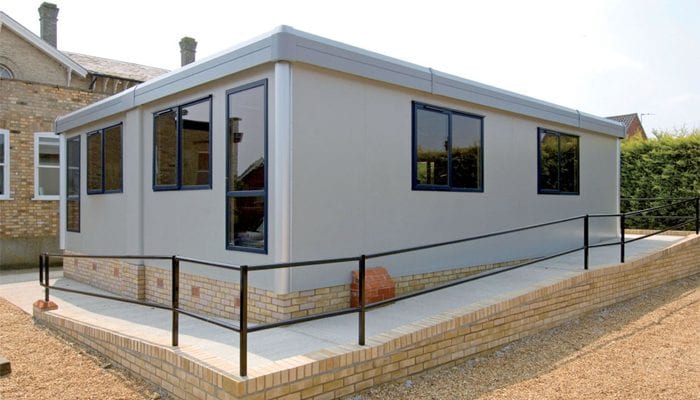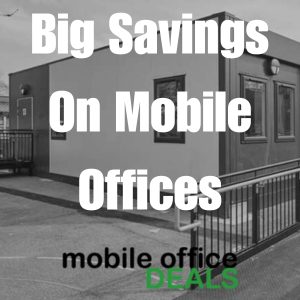
Modular Buildings for Healthcare: Fast-Tracking Facility Expansion
In the fast-paced and ever-evolving healthcare industry, the ability to quickly adapt and expand facilities is crucial. Modular buildings have emerged as a key solution in fast-tracking healthcare facility expansion. This blog explores how modular construction is playing a pivotal role in healthcare, offering speed, flexibility, and efficiency in addressing the growing needs of this critical sector.
The Growing Demand for Healthcare Facilities
The healthcare sector faces constant challenges, including increasing patient numbers, evolving medical technologies, and the need for specialized spaces. Traditional construction methods often fall short in meeting these urgent demands due to longer build times and higher costs.
Why Modular Buildings are a Fit for Healthcare
Modular construction offers a solution that is well-suited to the unique demands of healthcare facility expansion:
Speed of Construction
- Time-Efficient: Modular buildings are constructed off-site in controlled factory settings, significantly reducing the build time by up to 50% compared to traditional methods.
- Rapid Deployment: For urgent needs, such as in response to public health emergencies, modular units can be deployed quickly.
Flexibility and Scalability
- Customizable Designs: Modular buildings can be designed to suit a wide range of healthcare needs, from patient rooms and labs to administrative offices.
- Scalable Solutions: They offer the flexibility to expand, reduce, or reconfigure layouts as healthcare needs change.
Cost-Effectiveness
- Budget-Friendly: With reduced construction time and more efficient use of materials, modular buildings often come with a lower overall cost.
- Less Disruption: As most construction is off-site, there is minimal disruption to existing healthcare services, reducing indirect costs associated with construction.
Quality and Safety
- High Standards: Modular units are built to meet strict quality and safety standards, ensuring they are fit for healthcare use.
- Controlled Environment: Construction in a controlled factory setting reduces the risk of defects and delays due to weather or site-based challenges.

Modular Buildings in Action: Healthcare Case Studies
Examining real-world examples, such as the rapid construction of modular hospitals during the COVID-19 pandemic, demonstrates the effectiveness of modular solutions in healthcare. These projects showcased how quickly healthcare facilities could be expanded or adapted in response to an urgent public health need.
The Patient and Staff Experience in Modular Healthcare Facilities
Comfort and Functionality
- Patient-Centric Design: Modular buildings can be equipped with all the necessary medical infrastructure while also focusing on patient comfort and privacy.
- Improved Work Environment: For healthcare staff, these buildings can provide well-designed, functional spaces that support their workflow and enhance job satisfaction.
Integrating Technology
- Tech-Ready Spaces: Modular units can be designed to integrate advanced medical technologies and digital healthcare systems, ensuring that facilities remain at the forefront of modern healthcare.
The Future of Healthcare Expansion with Modular Buildings
Looking forward, modular construction is poised to become an increasingly important part of healthcare facility planning. Its adaptability makes it suitable for everything from temporary pop-up clinics to permanent hospital expansions.
Modular buildings offer a practical and innovative solution for rapidly expanding healthcare facilities. They align with the sector’s needs for speed, flexibility, cost-effectiveness, and high quality. For healthcare providers looking to quickly adapt to changing needs, modular construction presents a viable and forward-thinking option.
Exploring Sustainability in Modular Healthcare Construction
As the healthcare industry continues to evolve, so does its approach to construction. Sustainability has become a cornerstone in this evolution, with modular construction leading the way in eco-friendly building practices. This section delves into how modular healthcare construction is not only beneficial for meeting immediate needs but also advantageous in promoting environmental stewardship.
Eco-Friendly Building Practices in Modular Construction
Modular construction is increasingly recognized for its environmentally friendly approach. Unlike traditional construction methods, modular buildings are predominantly constructed in a factory-controlled environment. This controlled setting allows for more precise material usage, significantly reducing waste. Excess materials in one project can be efficiently redirected to another, minimizing the typical construction debris sent to landfills.
Moreover, the off-site construction process lessens the environmental impact on the construction site. This reduction in on-site activity lowers the carbon footprint typically associated with traditional construction methods, such as extensive vehicle emissions and site disturbance.

Energy Efficiency in Modular Healthcare Buildings
Energy efficiency is a critical aspect of sustainable construction, and modular buildings excel in this area. Modular healthcare facilities can be designed with a variety of energy-efficient features:
- Insulation: High-quality, sustainable insulation materials can be used to enhance the energy efficiency of modular buildings. Proper insulation helps in maintaining indoor temperature, reducing the reliance on heating and cooling systems, and consequently lowering energy consumption.
- Windows and Lighting: Incorporating energy-efficient windows and lighting fixtures contributes significantly to reducing energy use. For instance, the use of LED lighting and daylighting strategies can minimize electricity consumption, while energy-efficient windows can reduce heat loss.
- Heating, Ventilation, and Air Conditioning (HVAC) Systems: Advanced, eco-friendly HVAC systems can be integrated into modular buildings. These systems are designed to provide optimal indoor air quality and temperature control with minimal energy use.
- Renewable Energy Sources: Modular buildings offer the flexibility to incorporate renewable energy sources, such as solar panels or wind energy systems. These features can further reduce the building’s reliance on non-renewable energy sources, enhancing its overall sustainability.
Navigating the Regulatory Landscape for Modular Healthcare Facilities
The implementation of modular healthcare facilities comes with its own set of regulatory considerations. Understanding and adhering to these regulations is crucial to ensure not only the legality of these structures but also the safety and quality of patient care provided within them. This section delves into the compliance with health regulations and the navigation of zoning and permitting challenges.
Compliance with Health Regulations
Modular healthcare facilities, like traditional buildings, must adhere to a variety of health regulations and standards. These regulations are in place to ensure patient safety, privacy, and the overall quality of care.
- Building Codes and Standards: Modular buildings must comply with national and local building codes, which dictate standards for construction, fire safety, and accessibility. These codes ensure that the facilities are structurally sound and safe for both patients and healthcare providers.
- Healthcare-Specific Regulations: In addition to general building codes, modular healthcare facilities must meet specific healthcare regulations. This includes compliance with sanitation standards, patient privacy laws such as HIPAA in the United States, and specific requirements for different types of medical facilities, like clinics, hospitals, or diagnostic centers.
- Quality Assurance: Modular building providers often have rigorous quality assurance processes in place. These processes ensure that each module meets the required healthcare standards before leaving the factory, contributing to the overall reliability and safety of the finished facility.

Zoning and Permitting
Understanding and navigating zoning laws and obtaining the necessary permits can be one of the more complex aspects of establishing a modular healthcare facility.
- Zoning Laws: Zoning laws vary significantly from one locality to another. These laws determine where a healthcare facility can be located and may impose restrictions on the size or type of structure allowed.
- Permitting Process: Obtaining the necessary permits for a modular healthcare facility can be a multistep process. This typically involves submitting detailed plans for the facility, which must be approved by local building authorities. The process may also include inspections at various stages of construction and installation.
- Expert Guidance: Navigating these regulatory waters often requires expert guidance. Many modular building providers offer assistance in this area, helping clients understand and fulfill the local requirements for zoning and permitting.
Navigating the regulatory landscape is a critical step in the successful implementation of modular healthcare facilities. Compliance with health regulations ensures that these facilities provide a safe and secure environment for patient care. Meanwhile, understanding zoning and permitting processes ensures that the construction and operation of these facilities are legally sound and community-friendly.
Funding Options for Modular Buildings and Healthcare Facilities
For healthcare providers considering a modular facility, understanding the financial aspects is key. This section offers a comprehensive look at the costs involved in constructing a modular healthcare facility and explores various funding and financing options available to support such investments.
Cost Analysis of Modular Healthcare Construction
The cost of constructing a modular healthcare facility can vary based on several factors, including the size of the facility, the level of customization, and the geographic location. However, there are some general cost considerations and potential savings associated with modular construction:
- Construction Costs: Generally, modular construction can be more cost-effective than traditional building methods. The factory-based production process often leads to lower labor costs, more efficient use of materials, and reduced waste.
- Time Savings Equals Cost Savings: One of the most significant financial benefits of modular construction is the reduced build time. Faster construction means healthcare facilities can become operational sooner, which can translate to quicker revenue generation.
- Design and Pre-Construction Costs: While design costs can be similar to traditional construction, modular buildings offer the advantage of predictable costs, with fewer surprises or unexpected expenses during the build.

Funding and Financing Options
Navigating the funding landscape for modular healthcare facilities can open up various avenues for financial support:
- Traditional Loans: Commercial loans from banks or financial institutions are a common route. These loans can cover a significant portion of the project costs, depending on the terms and eligibility.
- Healthcare Grants: In some regions, grants are available specifically for healthcare infrastructure development. These can be particularly useful for non-profit or community healthcare providers.
- Public-Private Partnerships (PPPs): PPPs are collaborative ventures between public entities and private companies. They can provide a viable financing option for large-scale healthcare projects, including modular facilities.
- Leasing Options: Some modular building providers offer leasing options, which can be an attractive alternative for healthcare providers not looking to own the building outright.
- Government Incentives: Depending on the location, there may be government incentives available for healthcare facilities that prioritize sustainability or serve underserved communities.
Investing in a modular healthcare facility involves a careful analysis of costs and an exploration of the various funding and financing options available. While modular construction often presents a more cost-effective alternative to traditional building methods, understanding the full spectrum of financial considerations is crucial. With the right funding strategy, modular healthcare facilities can offer a financially viable solution for expanding healthcare services.
The shift towards modular construction in healthcare is more than just a trend; it’s a move towards a more sustainable future. By embracing eco-friendly building practices and energy-efficient designs, modular healthcare buildings are setting new standards in sustainable construction. These facilities not only meet the immediate needs of expanding healthcare services but also pave the way for a more environmentally responsible approach in the healthcare sector. Let us help you expand your healthcare services with efficient, customizable, and quality modular solutions.
